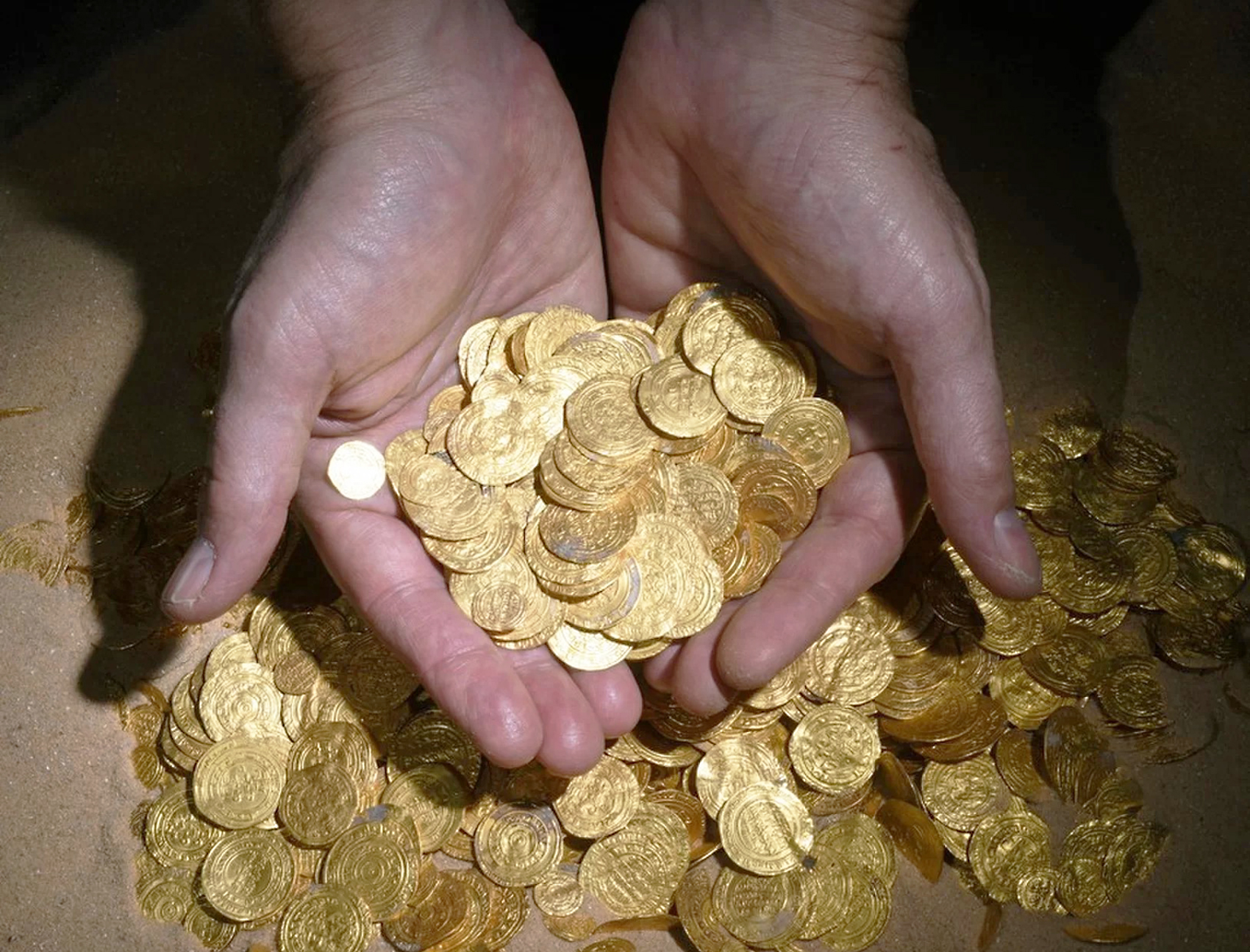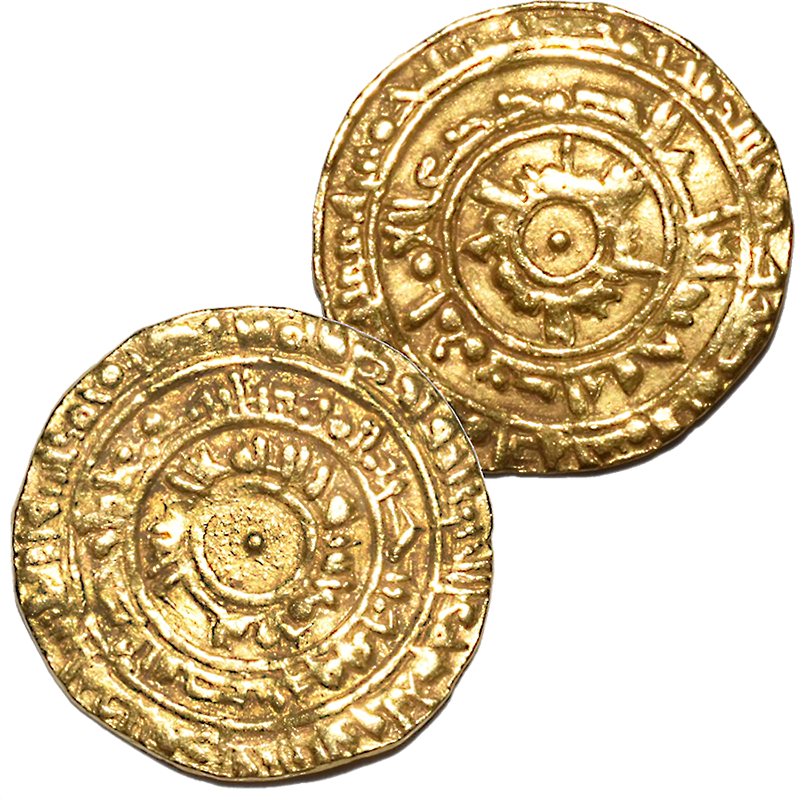
Bible, History, Archaeology
Bible,
History,
Archaeology
A treasure trove of 2,000 gold coins
discovered under the sea off Caesarea
2,000 thousand-year-old gold coins. This is what members of a diving club have just discovered by chance at the bottom of the ancient port of Caesarea on the Mediterranean coast. According to the Israel Antiquities Authority, this is the most important numismatic treasure ever unearthed in Israel.
 The discovery
The discovery
The discovery was made after recent storms stirred up the harbor's seabed. «At first, they thought they had spotted a gambling coin», and only changed their minds when they picked up several gold coins. They alerted the director of their diving club, who in turn informed the Israel Antiquities Authority.
Image opposite: storms that stirred up the sandy seabed revealed gold coins buried since the dawn of time. Public domain.
Pieces in perfect condition after a thousand years under the sea
Divers from the Antiquities Authority have detected around 2,000 dinars, half-dinars and quarter-dinars, the oldest of which were minted in Palermo, Sicily, in the second half of the 9th century. Most of the coins date back to two Fatimid caliphs who ruled from the end of the 10th century to the first third of the 11th over a territory covering a large part of North Africa, Sicily and part of the Near East.
In excellent condition despite a thousand years at the bottom of the sea, the coins didn't even need cleaning, says numismatic expert Robert Cole. Some bear bite marks showing that their owners tested their quality with their teeth. Still others appear to have just been minted.

More than 2,000 gold coins were discovered off the port of Caesarea. © IAA.
Several hypotheses

Image opposite: Dinar - Al-Mu'izz li-Din Allah Al-Mansuriya. Diameter : 21 mm.
Gold coinage (obverse and reverse) from the Fatimid Caliphate, 957 A.D. © Numista.
Or the money was to be used to pay the wages of the garrison defending Caesarea. Or perhaps the money belonged to a wealthy merchant whose ship traded with Mediterranean ports before sinking. The Antiquities Authority hopes that the study of the context will reveal more.
The Fatimid dynasty is reputed to have been fabulously wealthy. Its rise coincided with a revival of maritime trade in the eastern Mediterranean basin. Caesarea, built by the King of Judea Herod 1st in the 1st century BC, and other port cities developed under the Fatimids. Trade between Muslims and Crusaders flourished in times of peace, without ceasing in times of war, reports the Israel Antiquities Authority.
Important remains from Roman and medieval times make Caesarea one of Israel's major tourist sites.

 The discovery
The discovery